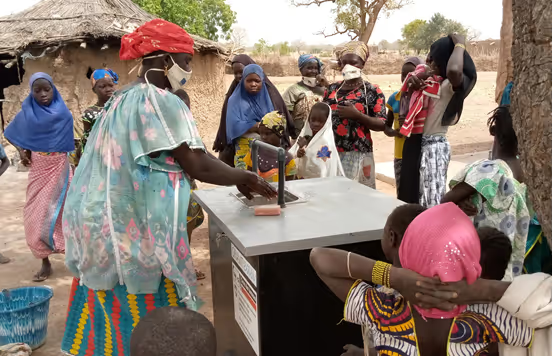AI Supply Chain Framework for Uganda

Project overview
Artificial Intelligence framework enhancing humanitarian supply chain efficiency through predictive analytics and offline-capable design for Uganda's health system.
Project solution
This project offers [specific solution or intervention] to tackle [challenge]. By implementing [strategies, tools, or innovations], the project aims to achieve [desired outcomes]. The approach is designed to [specific actions or methods] to bring about meaningful change in [community, region, or issue area].
Expected outcomes
This project aims to achieve [specific outcomes], such as [measurable results, improvements, or changes]. The expected impact includes [benefits to the target community, advancements in research or innovation, or long-term effects]. By the end of the project, we anticipate [specific changes or milestones] that will contribute to [broader goals or objectives].
What humanitarian need is being addressed?
Supply chain inefficiencies create gaps in essential service delivery across Uganda's humanitarian response system. Health facilities and programs in Karamoja and refugee-hosting districts experience periodic supply shortages that interrupt care continuity. Demand forecasting relies on manual processes that struggle to anticipate seasonal variations and emergency spikes. Remote areas face connectivity challenges that limit real-time inventory tracking and coordination between distribution points. Multiple stakeholders - government agencies, UN organisations and NGOs operate with different procurement timelines and data systems, creating coordination gaps. These systemic challenges affect treatment availability and programme effectiveness particularly impacting vulnerable populations who depend on consistent supply chains for health services, nutrition support and emergency assistance.
What is the innovative solution and how will it improve existing humanitarian practice?
Our AI framework focuses on two core modules specifications which are predictive demand analytics that forecast supply needs using historical patterns and seasonal data and offline-first design enabling operations in low-connectivity settings. The specifications incorporates fraud prevention protocols, operates independently of internet access and integrates with existing government and humanitarian systems. It supports evidence-based decision making while maintaining human oversight and adapts to local contexts through stakeholder engagement and community input mechanisms.
Expected outcomes
Some expected outcomes of this project are:
- Validated technical specifications for predictive analytics and offline-first AI modules.
- Comprehensive implementation guidelines covering technical and operational requirements.
- Fraud prevention protocols adapted for humanitarian contexts.
- Capacity building materials for government and humanitarian staff.
- Policy recommendations for AI integration in supply chains.
- Baseline performance benchmarks for future evaluation.
- Open-access documentation enabling broader adoption and strengthened institutional knowledge on AI applications in resource-constrained settings.
Project delivery & updates
Stay up to date with the latest developments from this project. Here, you will find details on what has been delivered, resources created, and regular updates as the project progresses. Access key documents, reports, and other materials to see how the project is making an impact.